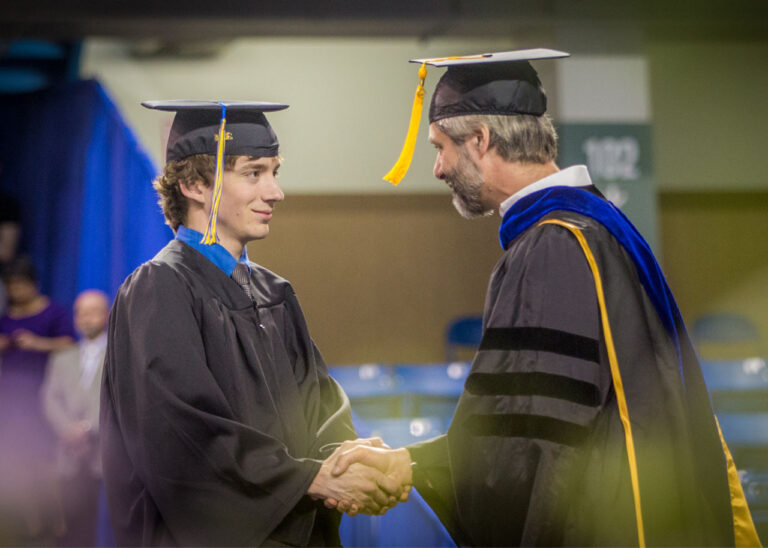Teaching as mentoring
Are you a “guide on the side” teacher or “sage on the stage”? Most of us aren’t just one kind of teacher at any time, and we aren’t the same kinds of teacher in every situation. The best of us are agile teachers. We can also identify when a student needs more or a different kind of support than a conventional teacher-student relationship might offer. How do you support your students? How do you guide them not only through course material, but through navigating the university, their professional ambitions, a balance between personal and academic lives? This is the work of a mentor, a role that is often framed as a one-to-one relationship and formalized through a course or program. What would it look like to integrate a teacher-as-mentor identity more fully into your teaching practice? See the mentoring principles below for guidance.
Principle 1: Share
Like the student, a mentee is often a newcomer to a particular field or place. The mentor has experience and is expected to both model and advise for the mentee.
- Help students identify where they have expertise and ask them to share with and/or teach you and other students.
- Help students identify challenges — academic or otherwise — and support them working through what’s hard. Oftentimes this simply requires prompting reflection as part of an assignment.
- Share your story as well as your disciplinary knowledge. This means talking to students — either as a class or one-on-one — about your experience getting to where you are, where you struggled, and strategies you’ve developed for everything from collaboration to work-life balance.
- “Mentoring does not and cannot come from just one person’ (Beck & Grohowski, 2016). When you cannot answer a question or offer the support a student is seeking, connect them with others who can. UAF offers a number of student support services and UAF student organizations offer a sense of community and peer mentorship.
Principle 2: Be Present
Key to mentoring is being available, and yet key to your sanity is having your own space. How to balance this in a teaching context?
- Make your office hours virtual for flexibility — if you can log-in to your virtual office from anywhere, you’ll be better able to accommodate student schedules.
- Be clear about when you are available and what kind of response students can expect. For example, tell students that you stop checking email/Blackboard/Slack after 8pm, but they can expect to hear back from you by 10am the following day.
- Create and share a Google Calendar with students so they know when you’re available. Create “Appointment Slots’ so that they can schedule time with you without a time-consuming email back-and-forth.
- Seek support. Is there a particular student or group of students with whom you’d like to develop a formal mentoring relationship? UAF’s URSA and BLaST programs both sponsor mentoring of undergraduates (URSA link, BLaST link) and individual study turns a mentored project into a course for credit.
Principle 3: Respect
Mentors have experience; mentees do as well. Ask questions, listen, and acknowledge what your students are bringing to your class and to the relationships formed there. This will help establish the trust that any relationship — teacher, mentor, or teacher as mentor — needs to thrive.
Open the Teaching Tip: Teaching Mentoring as a PDF
References
Beck, E. & Grohowski, M. (2016). Pedagogical Training Via Relationship Building: The Value of Peer Mentoring. Hybrid Pedagogy, n.d. https://www.digitalpedagogylab.com/hybridped/pedagogical-training-via-relationship-building-value-peer-mentoring/
Chopra, V. & Saint, S. (2017). 6 Things Every Mentor Should Do. Harvard Business Review. https://hbr.org/2017/03/6-things-every-mentor-should-do
MENTOR (n.d.). The Wisdom of Age: A Handbook for Mentors. https://www.mentoring.org/new-site/wp-content/uploads/2015/09/Wisdom_of_Age-A_Handbook_for_Mentors.pdf

Kendell Newman Sadiik
Associate Director of Transformative Teaching
Instructional Designer
LION Liaison



